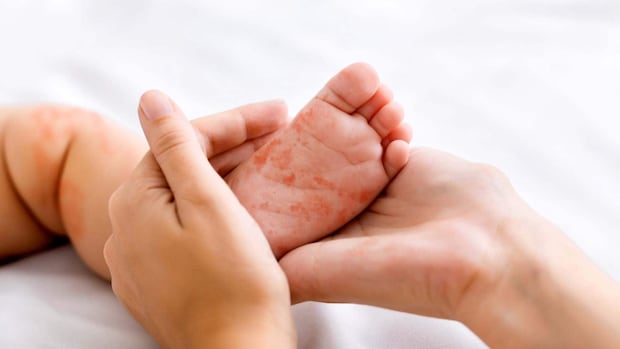
More children were left out of critical vaccination drives for diseases such as diphtheria, tetanus and whooping cough last year as a rise in conflicts across the globe hindered the supply of life-saving shots mostly in strife-torn regions, the United Nations said on Monday.
About 14.5 million children worldwide failed to get vaccinated in 2023, compared with 13.9 million a year earlier, according to UN estimates. The number, however, was lower than during the COVID-19 pandemic, when about 18 million children missed out on vaccination.
The UN also said that an additional 6.5 million children failed to receive more than a single dose, meaning they were not fully protected.
The estimates are based on how many children received either the first dose or all three doses of the DTP vaccine, a staple shot that protects against diphtheria, tetanus and pertussis, also known as whooping cough.
In total, 84 per cent of infants globally received their full course last year, below the necessary level to prevent disease outbreaks.
WATCH | Canada heading toward major measles outbreak without vaccine boost, models suggest:
Quebec has launched measles vaccination clinics as officials fear a major outbreak would put thousands of children at risk of getting very sick or even dying. The number of confirmed cases in Canada in 2024 has already exceeded the total for 2023, and modelling shows it could quickly get out of hand if vaccination rates don’t increase.
War-hit countries in particular saw a big jump in the number of children who were not immunized in 2023, the United Nations Children’s Fund (UNICEF) and the World Health Organization (WHO) said at a press conference last week, ahead of releasing the data.
Falling coverage in conflict zones
The biggest fall in vaccination coverage globally was in Sudan, which has been decimated by 15 months of civil war. It saw coverage rates fall to 57 per cent in 2023 from 75 per cent in 2022.
That meant nearly 701,000 children in Sudan were not vaccinated at all against killer diseases such as measles and diphtheria.
The data also suggested that vaccination rates against the deadly measles disease stalled, leaving nearly 35 million children with no or only partial protection.
In 2023, only 83 per cent of children worldwide received their first dose of the measles vaccine through routine health services, while the number of children receiving their second dose modestly increased from the previous year, to 74 per cent of children. To prevent outbreaks of measles, 95 per cent vaccination coverage is needed.
The number of children who failed to get immunized in the occupied Palestinian territories rose to 17,000 for the first nine months last year, based on data available until September, from 1,000 in 2021, the agencies said.
Sudan, Yemen and Afghanistan were all new entrants on the list of the 20 countries with the most unvaccinated — or “zero-dose” — children in 2023.
More than half of the world’s unvaccinated children live in countries with fragile, conflict-affected or vulnerable settings, although these nations only make up 28 per cent of the global birth cohort, UNICEF said.
There were some positives in the UN report. For example, there were around 600,000 fewer zero-dose children across the African region in 2023 than in 2022, and coverage of the HPV vaccine, which protects against cervical cancer, also improved globally. Ukraine also saw an improvement despite its war with Russia.
